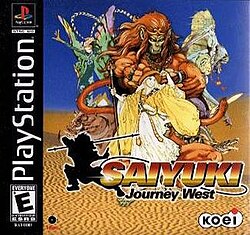This article needs additional citations for verification .(April 2007) |
| Saiyuki: Journey West | |
|---|---|
 North American cover art | |
| Developer | Koei |
| Publisher | Koei |
| Director | Minoru Honda |
| Designer | Minoru Honda |
| Artist | Akihiro Yamada |
| Platform | PlayStation |
| Release | |
| Genre | Tactical role-playing game |
| Mode | Single player |
Saiyuki: Journey West [a] is a tactical role-playing video game released for the Sony PlayStation by Koei. It is based loosely on the Chinese novel Journey to the West .